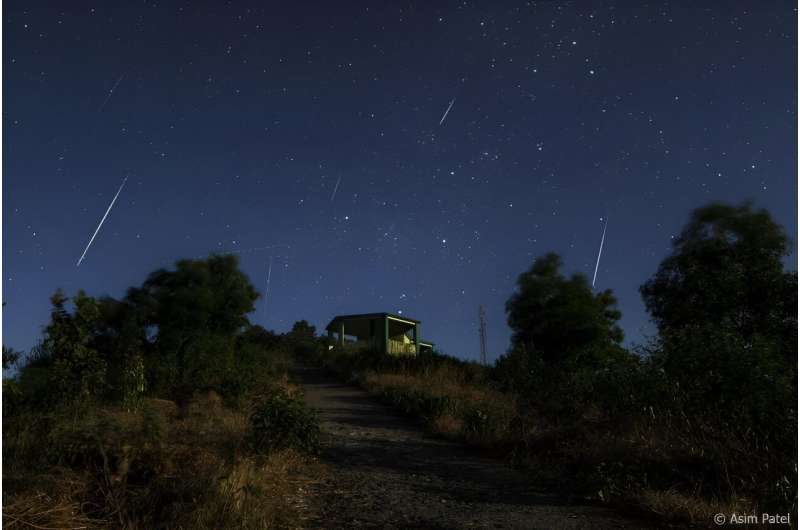Dr. Robert Massey, Deputy Executive Director at the Royal Astronomical Society, said, "The Geminids are a night sky treat and one of the best meteor showers of the year.
"What makes them particularly pretty is their color, so it's worth braving the colder weather to see what should be an impressive display.
"You don't need any equipment, just try to find a dark spot away from city lights and look up!"
The Geminids will be visible with the naked eye all over the U.K. and will peak at about 19:00 GMT.
Meteors can appear in any part of the sky but observers should look to the northeast to get the best view. If cloud cover makes spotting them tricky, the shower will still be active until December 20—albeit at a reduced rate.
The Geminids were first observed in 1862 and are thought to be intensifying every year. They are considered to be one of the best and most reliable annual meteor showers.
Meteors are small pieces of interplanetary debris which burn up in the Earth's atmosphere after coming in at high speeds—typically at 130,000 kilometers an hour in the case of the Geminids.
Friction with the upper atmosphere quickly heats up the incoming debris, the air around them glows brightly, and the particles are rapidly destroyed. The resulting streak of light is what we see from the ground as a meteor, or "shooting star."
Outside of meteor showers, there are around six random meteors (sporadics) visible each hour from a given location on any night.
But throughout the year the Earth's orbit intersects material left behind by comets, or in the case of the Geminids, the asteroid Phaethon. When we encounter these thicker streams of debris there is a surge in meteor numbers, which is what creates the shower.
Meteors in the upcoming shower can appear anywhere in the sky, but their trails appear to originate from a single point (known as the radiant) in the constellation of Gemini, hence the name Geminids. These meteors appear to be fairly slow moving, and can be intensely colored.
Provided by Royal Astronomical Society



